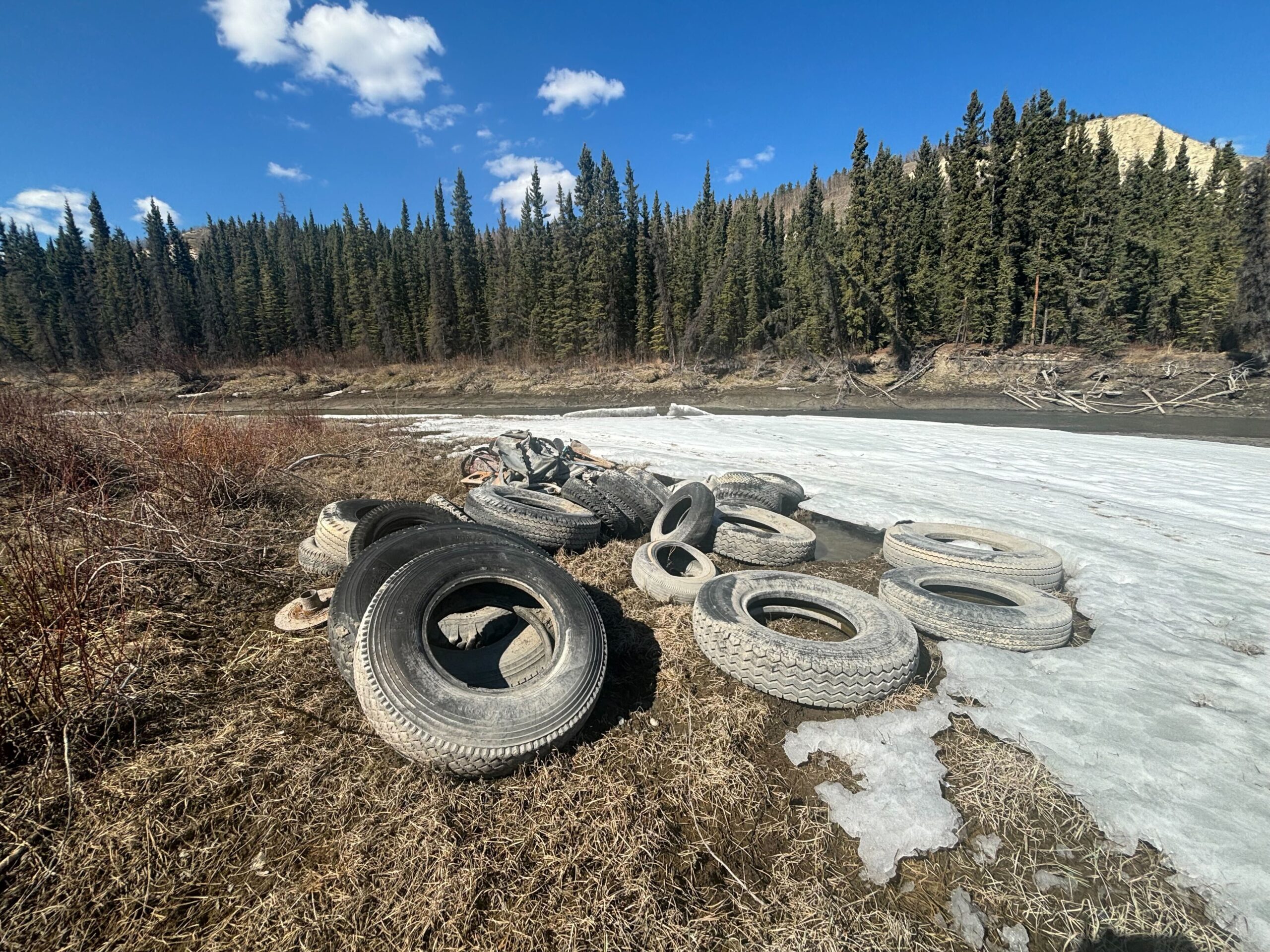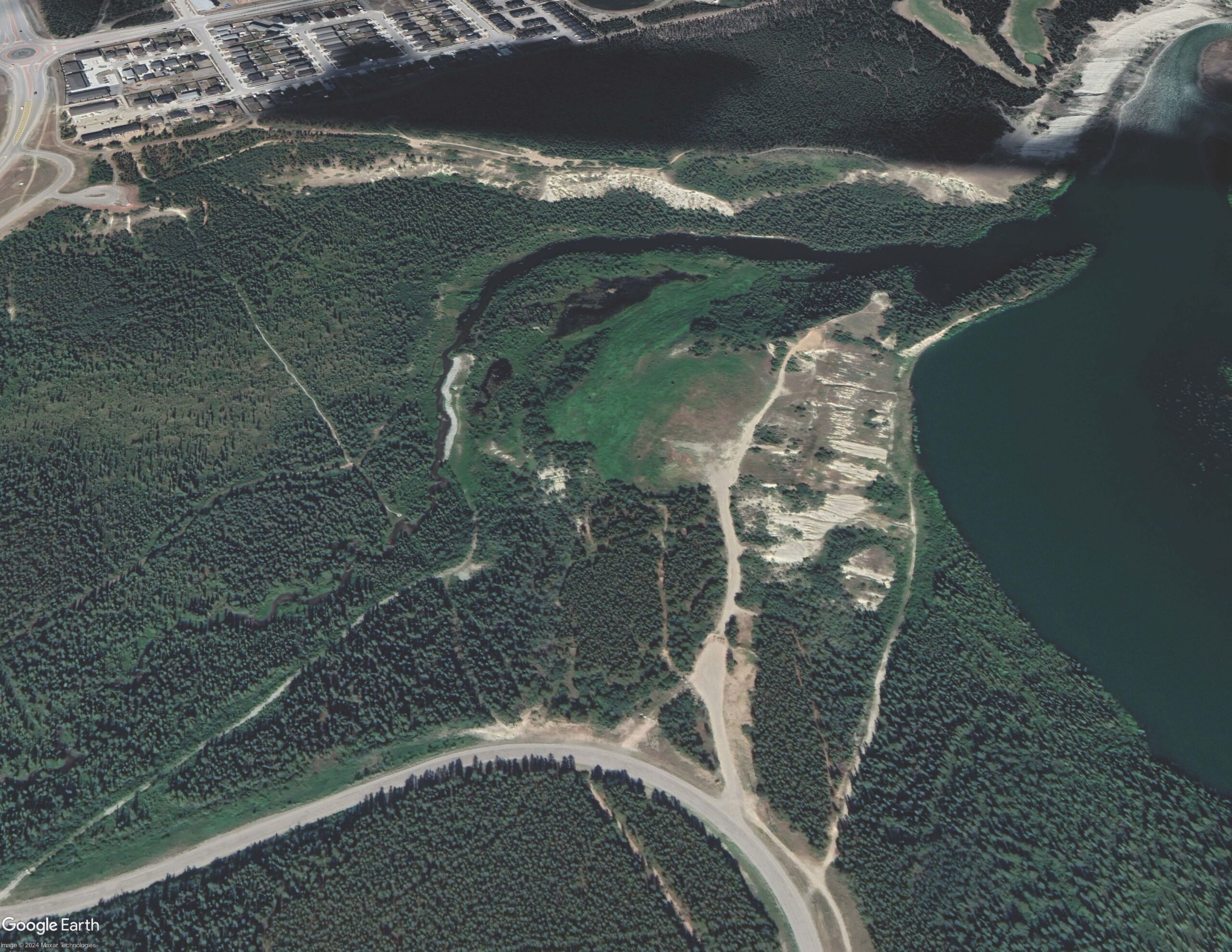What’s The Point? Dàmäwtän and the need for remediation
Written by Laurence Fox, Conservation Coordinator | April 30, 2024
Dàmäwtän is Southern Tutchone for “High Bank” and known by modern settlers as “The Point.” It’s located on the lower reaches of Chasàn Chùa (McIntyre Creek) where it empties into the Yukon River. Traditionally, Dàmäwtän served as an important lookout for local First Nations, as well as a staging ground for hunting and fishing, and a meeting place.
In 1942, the U.S. military promptly set up shop in Whitehorse to begin construction on the Alaska Highway. They quickly started using Dàmäwtän as a landfill for both the Canadian and U.S. military, displacing the First Nations people who camped and harvested in the region. After World War II ended in 1945, the U.S. military left and the dump briefly closed until the City of Whitehorse began using it for municipal purposes in the 1950s.

Abandoned tires at Dàmäwtän (The Point). Photo by Laurence Fox.
Largely unregulated, the dump site appears to have faced little environmental oversight or monitoring for the majority of its operational life. In some places along the bank, garbage deposits were as thick as 45 meters—so deep that if you had dug down to the bottom of all this trash, you could set three city buses vertically, hood to bumper, one on top of the other, in the hole you made.
When the dump was officially decommissioned in 1975, “clean up” was rudimentary at best, consisting primarily of pushing dirt up over the berm to cover the mess, and even that appears to have been rather slapdash. Dirt was simply pushed in over the dump, leaving bits of metal, tires, household waste, and other debris poking up through the thin covering.

Satellite photo of Dàmäwtän (The Point). Photo from Google Earth.
Concerns have been growing for decades around the damage—environmental, aesthetic, cultural, or otherwise—dumping has done to Dàmäwtän. Care for the Creek builds on the many other clean-up efforts led by concerned citizens, the Yukon Fish and Wildlife Management Board, and extensive clean-up work undertaken by Ta’an Kwäch’än Council (TKC), stewardship groups, and various other government agencies. For example, TKC removed 16 tonnes of scrap metal and 16 dump truck loads of abandoned tires, then resodded and reseeded the areas with native plants to encourage healthy revegetation between 2005 and 2012.
Today, waste such as tires, metal, car parts, and plastics continues to affect the landscape, waterways, and wildlife, creating physical hazards and potentially releasing hazardous chemicals. During a clean-up in 2023 led by the Yukon Fish and Wildlife Management Board, volunteers found dried fish eggs and bird eggs that didn’t have a chance to hatch, and tracks on shore from many mammals who likely rely on the creek for water.
In a few weeks, CPAWS Yukon and the Yukon Fish and Wildlife Management Board, in collaboration with KDFN and TKC, are hosting a Care for the Creek Community Event, dedicated to caring for, celebrating, and remediating Chasàn Chùa and the Dàmäwtän area. Join us Saturday, June 1st for a free BBQ, guided walks, and guest lectures!
